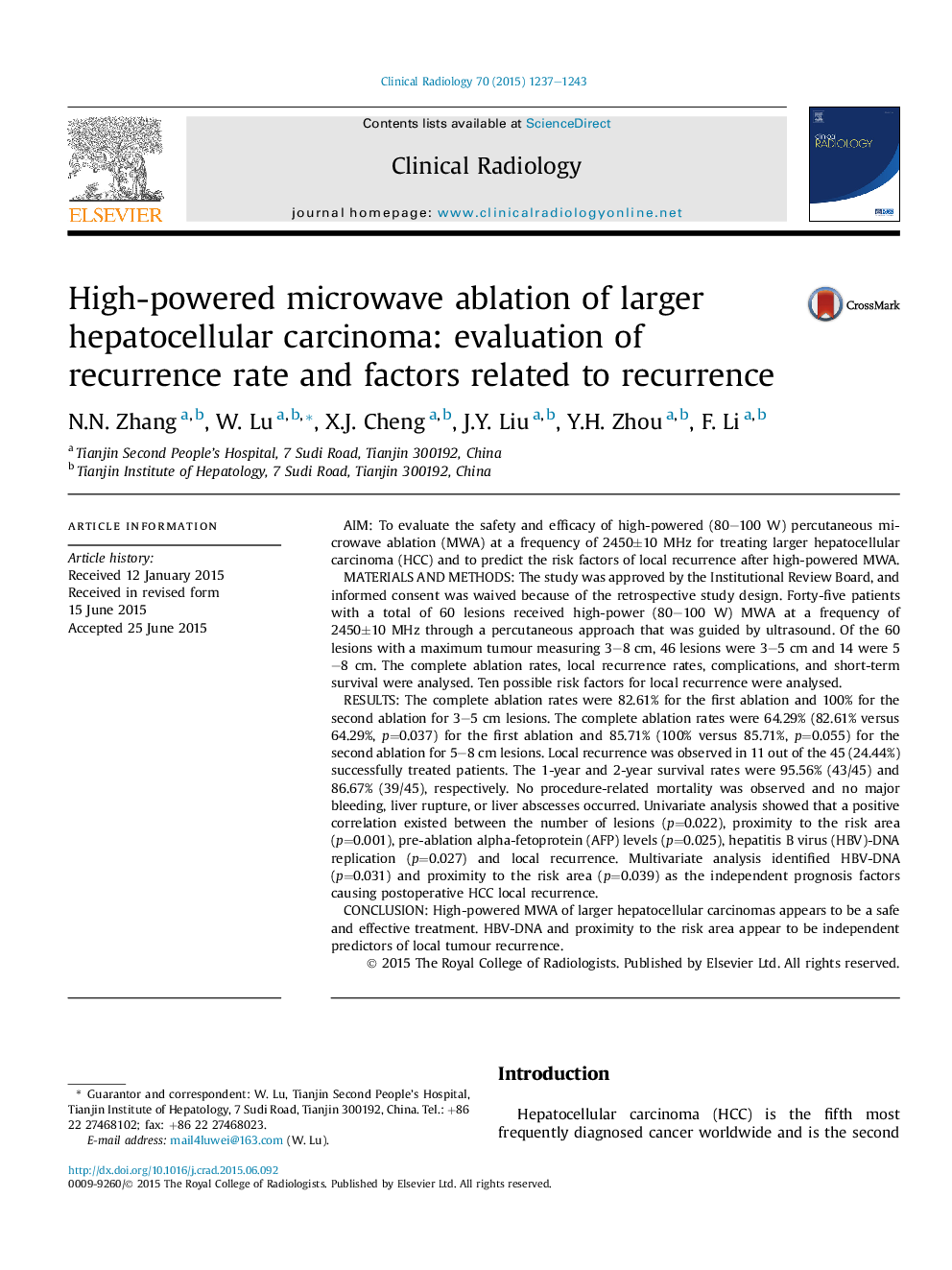| Article ID | Journal | Published Year | Pages | File Type |
|---|---|---|---|---|
| 6190756 | Clinical Radiology | 2015 | 7 Pages |
â¢High-powered (80-100W) percutaneous MWA with 2450 ± 10 MHz was used to treat larger HCC.â¢The risk factors of local recurrence after high-powered MWA were analysed.â¢High-powered MWA of larger HCC appears to be a safe and effective treatment.â¢HBV-DNA and proximity to risk area appear to be independent predictors of local recurrence.
AimTo evaluate the safety and efficacy of high-powered (80-100 W) percutaneous microwave ablation (MWA) at a frequency of 2450±10 MHz for treating larger hepatocellular carcinoma (HCC) and to predict the risk factors of local recurrence after high-powered MWA.Materials and methodsThe study was approved by the Institutional Review Board, and informed consent was waived because of the retrospective study design. Forty-five patients with a total of 60 lesions received high-power (80-100 W) MWA at a frequency of 2450±10 MHz through a percutaneous approach that was guided by ultrasound. Of the 60 lesions with a maximum tumour measuring 3-8 cm, 46 lesions were 3-5 cm and 14 were 5-8 cm. The complete ablation rates, local recurrence rates, complications, and short-term survival were analysed. Ten possible risk factors for local recurrence were analysed.ResultsThe complete ablation rates were 82.61% for the first ablation and 100% for the second ablation for 3-5 cm lesions. The complete ablation rates were 64.29% (82.61% versus 64.29%, p=0.037) for the first ablation and 85.71% (100% versus 85.71%, p=0.055) for the second ablation for 5-8 cm lesions. Local recurrence was observed in 11 out of the 45 (24.44%) successfully treated patients. The 1-year and 2-year survival rates were 95.56% (43/45) and 86.67% (39/45), respectively. No procedure-related mortality was observed and no major bleeding, liver rupture, or liver abscesses occurred. Univariate analysis showed that a positive correlation existed between the number of lesions (p=0.022), proximity to the risk area (p=0.001), pre-ablation alpha-fetoprotein (AFP) levels (p=0.025), hepatitis B virus (HBV)-DNA replication (p=0.027) and local recurrence. Multivariate analysis identified HBV-DNA (p=0.031) and proximity to the risk area (p=0.039) as the independent prognosis factors causing postoperative HCC local recurrence.ConclusionHigh-powered MWA of larger hepatocellular carcinomas appears to be a safe and effective treatment. HBV-DNA and proximity to the risk area appear to be independent predictors of local tumour recurrence.
